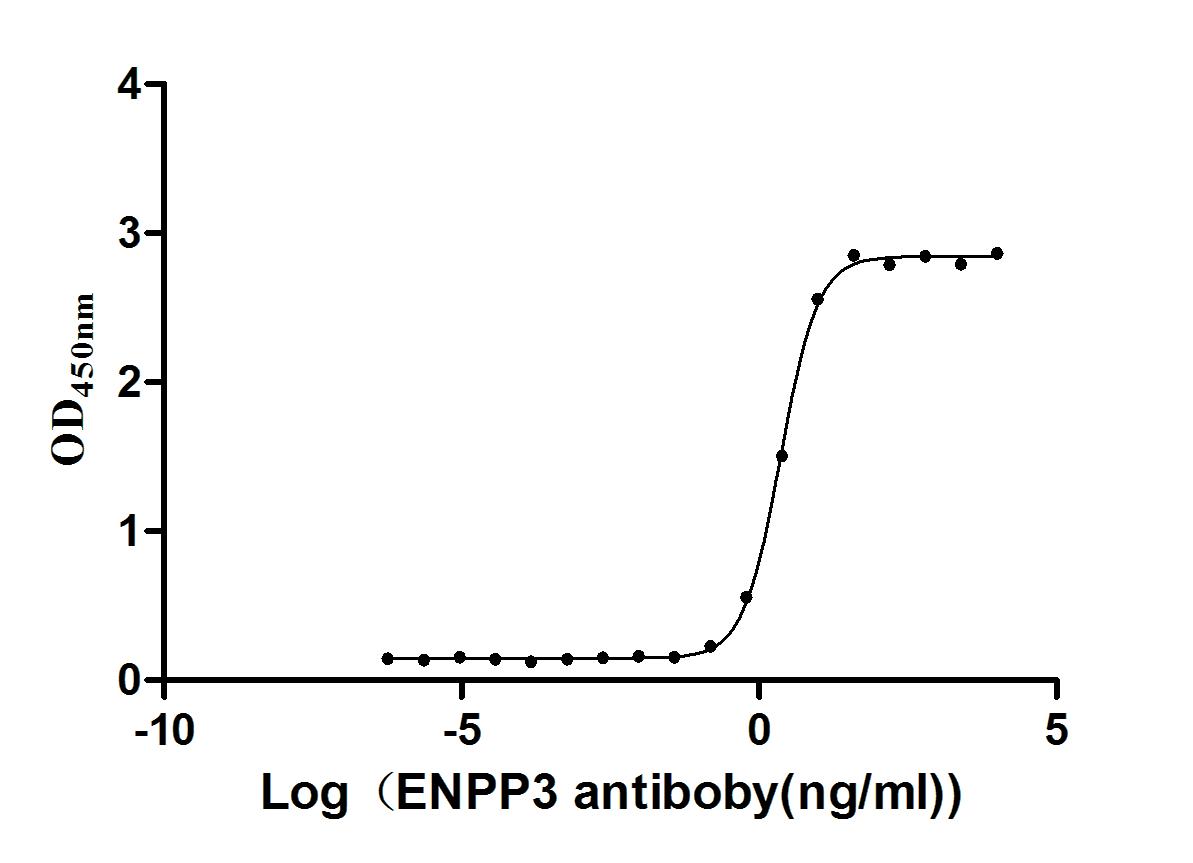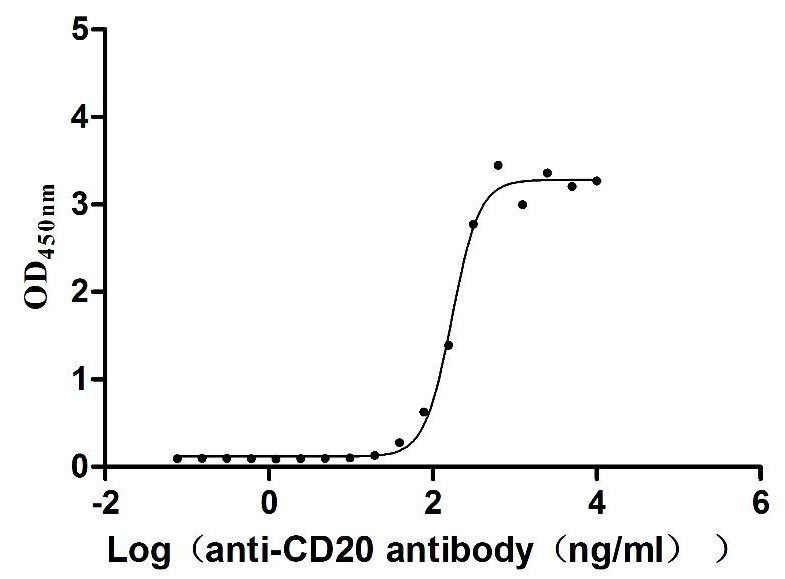Recombinant Human V-type proton ATPase subunit E 1 (ATP6V1E1)
-
货号:CSB-YP002402HU
-
规格:
-
来源:Yeast
-
其他:
-
货号:CSB-EP002402HU
-
规格:
-
来源:E.coli
-
其他:
-
货号:CSB-EP002402HU-B
-
规格:
-
来源:E.coli
-
共轭:Avi-tag Biotinylated
E. coli biotin ligase (BirA) is highly specific in covalently attaching biotin to the 15 amino acid AviTag peptide. This recombinant protein was biotinylated in vivo by AviTag-BirA technology, which method is BriA catalyzes amide linkage between the biotin and the specific lysine of the AviTag.
-
其他:
-
货号:CSB-BP002402HU
-
规格:
-
来源:Baculovirus
-
其他:
-
货号:CSB-MP002402HU
-
规格:
-
来源:Mammalian cell
-
其他:
产品详情
-
纯度:>85% (SDS-PAGE)
-
基因名:
-
Uniprot No.:
-
别名:ATP6V1E1; ATP6E; ATP6E2; V-type proton ATPase subunit E 1; V-ATPase subunit E 1; V-ATPase 31 kDa subunit; p31; Vacuolar proton pump subunit E 1
-
种属:Homo sapiens (Human)
-
蛋白长度:Full Length of Mature Protein
-
表达区域:2-226
-
氨基酸序列ALSDADVQK QIKHMMAFIE QEANEKAEEI DAKAEEEFNI EKGRLVQTQR LKIMEYYEKK EKQIEQQKKI QMSNLMNQAR LKVLRARDDL ITDLLNEAKQ RLSKVVKDTT RYQVLLDGLV LQGLYQLLEP RMIVRCRKQD FPLVKAAVQK AIPMYKIATK NDVDVQIDQE SYLPEDIAGG VEIYNGDRKI KVSNTLESRL DLIAQQMMPE VRGALFGANA NRKFLD
-
蛋白标签:Tag type will be determined during the manufacturing process.
The tag type will be determined during production process. If you have specified tag type, please tell us and we will develop the specified tag preferentially. -
产品提供形式:Lyophilized powder
Note: We will preferentially ship the format that we have in stock, however, if you have any special requirement for the format, please remark your requirement when placing the order, we will prepare according to your demand. -
复溶:We recommend that this vial be briefly centrifuged prior to opening to bring the contents to the bottom. Please reconstitute protein in deionized sterile water to a concentration of 0.1-1.0 mg/mL.We recommend to add 5-50% of glycerol (final concentration) and aliquot for long-term storage at -20℃/-80℃. Our default final concentration of glycerol is 50%. Customers could use it as reference.
-
储存条件:Store at -20°C/-80°C upon receipt, aliquoting is necessary for mutiple use. Avoid repeated freeze-thaw cycles.
-
保质期:The shelf life is related to many factors, storage state, buffer ingredients, storage temperature and the stability of the protein itself.
Generally, the shelf life of liquid form is 6 months at -20°C/-80°C. The shelf life of lyophilized form is 12 months at -20°C/-80°C. -
货期:Delivery time may differ from different purchasing way or location, please kindly consult your local distributors for specific delivery time.Note: All of our proteins are default shipped with normal blue ice packs, if you request to ship with dry ice, please communicate with us in advance and extra fees will be charged.
-
注意事项:Repeated freezing and thawing is not recommended. Store working aliquots at 4°C for up to one week.
-
Datasheet :Please contact us to get it.
相关产品
靶点详情
-
功能:Subunit of the V1 complex of vacuolar(H+)-ATPase (V-ATPase), a multisubunit enzyme composed of a peripheral complex (V1) that hydrolyzes ATP and a membrane integral complex (V0) that translocates protons. V-ATPase is responsible for acidifying and maintaining the pH of intracellular compartments and in some cell types, is targeted to the plasma membrane, where it is responsible for acidifying the extracellular environment.
-
基因功能参考文献:
- expression of the V-ATPase V1E1 has prognostic significance in esophageal squamous cell carcinoma, and is closely linked to migration, invasion, and aerobic glycolysis in esophageal cancer cells PMID: 27384996
- Low-grade PanIN lesions with typical columnar morphology displayed diffuse labeling of the V1E subunit. In advanced lesions it was found along the basolateral membranes. PMID: 25072283
- The genes CECR2, SLC25A18 and ATP6V1E1, mapping within the critical region for cat eye syndrome (CES), may be responsible for anorectal, renal and preauricular anomalies in patients with CES. PMID: 22395867
- Data demonstrate the physiological significance of the interaction between the E and H subunits of V-ATPase and extend previous studies on the arrangement of subunits on the peripheral stalk of V-ATPase. PMID: 12163484
- HuR shows increased binding to some V-ATPase mRNAs during ATP depletion; siRNA-mediated knockdown of HuR results in diminished V-ATPase expression PMID: 16155006
- Rat vacuolar H(+)ATPase associates with NHE-RF (Na(+)/H(+) exchanger regulatory factor); the E subunit was co-immunoprecipitated from rat kidney cytosol with NHE-RF antibodies. PMID: 10748165
- The mouse V-ATPase E may participate in the regulation of the mSos1-dependent Rac1 signaling pathway involved in growth factor receptor-mediated cell growth control. PMID: 11560919
显示更多
收起更多
-
相关疾病:Cutis laxa, autosomal recessive, 2C (ARCL2C)
-
亚细胞定位:Apical cell membrane.
-
蛋白家族:V-ATPase E subunit family
-
组织特异性:Kidney; localizes to early distal nephron, encompassing thick ascending limbs and distal convoluted tubules (at protein level). Ubiquitous. High expression in the skin.
-
数据库链接:
HGNC: 857
OMIM: 108746
KEGG: hsa:529
STRING: 9606.ENSP00000253413
UniGene: Hs.517338
Most popular with customers
-
Recombinant Human Prolactin receptor (PRLR), partial (Active)
Express system: Mammalian cell
Species: Homo sapiens (Human)
-
Recombinant Rat Microtubule-associated protein tau (Mapt) (Active)
Express system: Mammalian cell
Species: Rattus norvegicus (Rat)
-
Express system: Mammalian cell
Species: Homo sapiens (Human)
-
Recombinant Dog B-lymphocyte antigen CD20 (MS4A1)-VLPs (Active)
Express system: Mammalian cell
Species: Canis lupus familiaris (Dog) (Canis familiaris)
-
Recombinant Macaca fascicularis CD44 antigen (CD44), partial (Active)
Express system: Mammalian cell
Species: Macaca fascicularis (Crab-eating macaque) (Cynomolgus monkey)
-
Recombinant Human Tumor-associated calcium signal transducer 2 (TACSTD2), partial (Active)
Express system: Mammalian cell
Species: Homo sapiens (Human)
-
Recombinant Human Serotransferrin(TF) (Active)
Express system: Mammalian cell
Species: Homo sapiens (Human)
-
Recombinant Human Dipeptidase 3(DPEP3), partial (Active)
Express system: Mammalian cell
Species: Homo sapiens (Human)




















